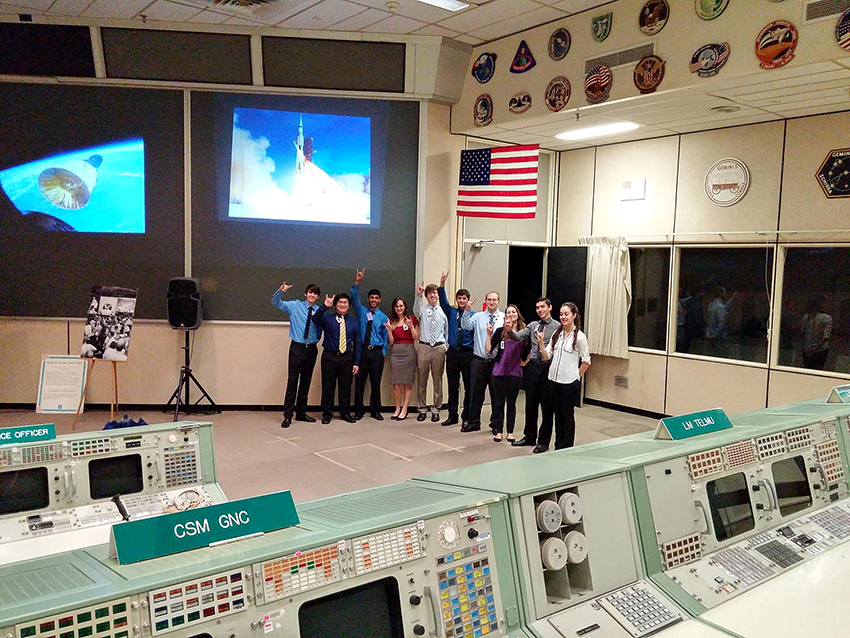A group of UT students is reaching for Mars by designing their own manned Mars mission and raising questions in the spaceflight community about how best to send humans to the red planet in the near future.
The research team, comprised of seven undergraduate students and one graduate student, developed a manned mission to Mars that includes designs for entry, descent and landing, according to team lead and aerospace engineering senior Joe Lingren. The group first presented their mission designs at NASA’s Johnson Space Center in May 2015 and again earlier this month at the 2016 New Worlds Conference in Austin. They are currently working to publish a condensed version of their paper.
The team works with UT researcher Humboldt Mandell and aerospace engineering professor Hans Mark. The project is based off a 1991 student-led undertaking; although that team was ultimately unable to put humans on Mars by its goal of 2003, Mark decided to try again 25 years later.
“We would have been on Mars in 2003 had we done the thing, but it never happened,” Mark said. “What we really want is something that we can publish in that magazine [Aerospace America] which says hey, here’s what we’ve done in 25 years. Unfortunately, we haven’t done very much. I believe that the time has come to be serious about it.”
Lingren said an important element of the students’ mission design involves limiting the mass that will land on Mars at one time by sending a larger number of small pieces. NASA’s current plan is to land 20 tons of supplies and equipment, but humans have not yet landed a spacecraft weighing more than five tons.
“Everybody else is thinking big, and we’re thinking reasonable,” Lingren said. “Mass is the driving thing in these missions. We’re really focusing on keeping things small and kind of lean and mean.”
The team specifically focused on cutting down the mass of the equipment that someone who plans to live on Mars will require. A habitat large enough to comfortably house an astronaut on Mars for 30 days turned out to be bigger than the rockets available to send it, according to Lingren. The research team’s solution was to split the habitat into many smaller pieces.
Within NASA’s time frame of getting to Mars, Lingren said their mission design is more feasible than other designs based on current technology.
“Right now, NASA and SpaceX, all of these people with their plans to go to Mars, they just want to push straight ahead, and they just want to get people to Mars,” Lingren said. “They have this romanticism behind it. We’re saying, maybe we should slow down and wait for that kind of technology to advance.”
Team member and aerospace engineering senior Saeyone Balasekar said the team wants to get their ideas out there because it could help design a potential mission that includes issues of mass not addressed by other companies’ designs.
“We can’t discredit [these other companies]. Obviously they’re thinking big, but their biggest flaw is [that they’re hoping] they’ll have those technologies ready by the time the mission is ready,”
Balasekar said. “We don’t know if we’re going to have those technologies in the next 5 to 10 years.”
All of the undergraduate members of the research teams are seniors and plan to graduate next semester. The students are considering recruiting new members to create another group, continue their research and focus on specific technologies and obstacles that a Mars mission would face.
“All of the guys at Johnson Space Center wanted us to do that,” Lingren said. “They really want the communication between the universities so they can get some fresh ideas. I think that would be a pretty good way of going forward.”















